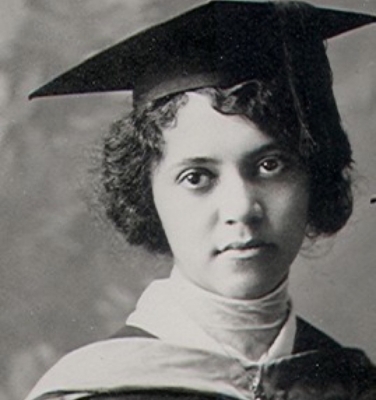
Alice Augusta Ball was an African American chemist who developed an injectable oil extract, the first successful treatment for leprosy. It was used until the 1940s. However, she did not get credit for her discovery for nearly 90 years. Some attribute this to gender and racial discrimination.
Ball was born in 1892, in Washington, to James Presley, a newspaper editor, and Laura Louise, a photographer. After graduating from Seattle High School in 1910, Ball earned her bachelor’s degree in pharmaceutical chemistry from the University of Washington, and her master’s degree from the College of Hawaii (now known as the University of Hawaii), in 1915. Alice Ball was the first woman and first African American to receive a master’s degree from the University of Hawaii and the first woman chemistry professor at the university.
In her postgraduate research career at the University of Hawaii, Ball investigated the chemical makeup and active principle of Piper methysticum (kava – a herbal plant grown in the Pacific islands) for her master’s thesis.
Impressed with her work, Dr. Harry T. Hollmann, a doctor at the Kalihi Hospital in Hawaii that treated patients with leprosy, reached out to Ball to isolate the active chemical compounds in chaulmoogra oil. Chaulmoogra oil had previously been used in the treatment of leprosy with mixed results and severe side effects. An ideal treatment, Dr. Hollmann thought, would be a solution made from the active components of the oil that could be injected without side effects.
In less than a year, Ball developed a technique that would allow the oil from chaulmoogra tree seeds to become injectable and absorbable by the body. She was just 23 years then. Her newly developed technique involved isolating ethyl ester compounds from the fatty acids of the chaulmoogra oil. This isolation technique, later known as the Ball Method, was the only pain-free treatment for leprosy available for over thirty years until sulfone drugs were introduced. Unfortunately, Ball died in 1916, at the young age of 24, before publishing her findings. The president of the College of Hawaii, Dr. Arthur Dean, continued and published Ball’s research without giving her credit for the discovery. Dean even called the treatment. “Dean Method.” Ball’s name might have been completely forgotten but thanks to Dr. Hollmann, who in a 1922 medical journal credited Ball for creating the chaulmoogra solution and referred to it as the “Ball Method.”
Even so, Ball remained largely forgotten until 2000, when the University of Hawaii placed a bronze plaque in front of a chaulmoogra tree on campus to honour Ball’s discovery. In 2007, the University of Hawaii posthumously awarded her with the Regents Medal of Distinction.
Picture Credit : Google




